Bridget O’Connor, daughter of Patrick and Mary O’Connor was born in Witless Bay on May 30, 1895. She received her early education from the Presentation Sisters in Witless Bay and at the age of fourteen became a student at St. Bride’s College, Littledale. Her academic excellence and her involvement in all aspects of Littledale life in her student years prepared her well for the role she was to play at the College over the next thirty years.
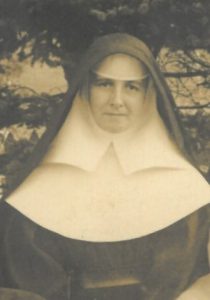 Bridget taught at St. Bride’s for four years before entering the Sisters of Mercy in January 1917. She was received into the novitiate as Sister Mary Augustine in July of that same year and was professed in July of 1919.
Bridget taught at St. Bride’s for four years before entering the Sisters of Mercy in January 1917. She was received into the novitiate as Sister Mary Augustine in July of that same year and was professed in July of 1919.
Sister M. Augustine had a longer unbroken association with Littledale than any other sister in the congregation, spending her whole religious life there except for two years of study at Catholic University of America. As Headmistress from 1921 until 1942, she was revered by students and teachers alike. Her dedication to the cause of Christian education, as well as her personal interest in every student, were legendary.
Sister M. Augustine died at St. Clare’s on July 20,1942 at the age of forty-seven years. In 1940 when the Littledale campus expanded with the construction of a new school it was fittingly named St. Augustine’s in honor of Sister M. Augustine, who had been so prominent in life and ministry at Littledale for so many years.
Sister M. Augustine’s sisters, Marcella and Kathleen O’Connor, were known to many of our sisters. In 1965 Kathleen, the last surviving member of the family, gifted our Congregation with Kilcash, the O’Connor homestead in Witless Bay. In a letter to Mother Frances, then Secretary General of the Congregation, on June 21, 1965 Kathleen wrote: “I am sure that every O’Connor, from my grandfather who was the first to live there to the last, considers it an honor that the old family place has passed to the Mercy Congregation.” Indeed, Kilcash has been appreciated and enjoyed by many of us for nearly sixty years.
- Read more Sisters stories documenting our Newfoundland Mercy Story
Bridget O’Connor, hija de Patrick y Mary O’Connor, nació en Witless Bay el 30 de mayo de 1895. Recibió su educación temprana de las Hermanas de la Presentación en Witless Bay y a la edad de catorce años se convirtió en una estudiante de St. Bride’s College, Littledale. Su excelencia académica y su participación en todos los aspectos de la vida Littledale en sus años de estudiante la prepararon bien para el papel que iba a desempeñar en el Colegio durante los próximos treinta años.
 Bridget enseñó en St. Bride’s durante cuatro años antes de ingresar en las Hermanas de la Misericordia en enero de 1917. Fue recibida en el noviciado como Hermana Mary Augustine en julio de ese mismo año y profesó en julio de 1919.
Bridget enseñó en St. Bride’s durante cuatro años antes de ingresar en las Hermanas de la Misericordia en enero de 1917. Fue recibida en el noviciado como Hermana Mary Augustine en julio de ese mismo año y profesó en julio de 1919.
La Hermana M. Augustine tuvo una asociación ininterrumpida con Littledale más larga que cualquier otra hermana en la congregación, pasando toda su vida religiosa allí excepto por dos años de estudio en la Universidad Católica de América. Como directora desde 1921 hasta 1942, fue venerada tanto por los alumnos como por los profesores. Su dedicación a la causa de la educación cristiana, así como su interés personal por cada alumno, eran legendarios.
La Hna. M. Augustine murió en St. Clare el 20 de julio de 1942 a la edad de cuarenta y siete años. En 1940, cuando el campus de Littledale se amplió con la construcción de una nueva escuela, se le dio el nombre de St. Augustine’s en honor de la Hna. M. Augustine, que había sido tan prominente en la vida y el ministerio en Littledale durante tantos años.
Las hermanas de la Hermana M. Augustine, Marcella y Kathleen O’Connor, eran conocidas por muchas de nuestras hermanas. En 1965, Kathleen, la última superviviente de la familia, regaló a nuestra Congregación Kilcash, la casa de los O’Connor en Witless Bay. En una carta a la Madre Francisca, entonces Secretaria General de la Congregación, el 21 de junio de 1965, Kathleen escribió: «Estoy segura de que todos los O’Connor, desde mi abuelo que fue el primero en vivir allí hasta el último, consideran un honor que el antiguo lugar de la familia haya pasado a la Congregación de la Misericordia.» Efectivamente, Kilcash ha sido apreciado y disfrutado por muchos de nosotros durante casi sesenta años.
- Lea más historias de Hermanas que documentan nuestra Historia de Misericordia de Terranova


 During her eight years at Mercy Convent, Sister Mary Joseph studied music under the direction of Professor Thomas Mullock, brother of Bishop Mullock and the first organist at the Cathedral of St. John the Baptist. She was the aunt of Sister M. Aloysius Rawlins who played such a significant role in the early days of St. Clare’s Mercy Hospital.
During her eight years at Mercy Convent, Sister Mary Joseph studied music under the direction of Professor Thomas Mullock, brother of Bishop Mullock and the first organist at the Cathedral of St. John the Baptist. She was the aunt of Sister M. Aloysius Rawlins who played such a significant role in the early days of St. Clare’s Mercy Hospital.
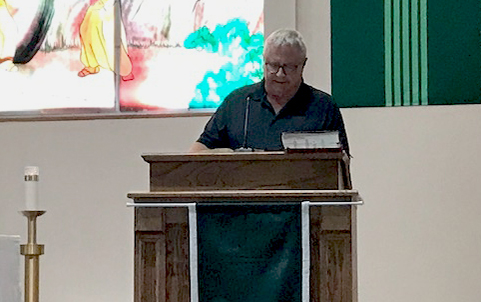
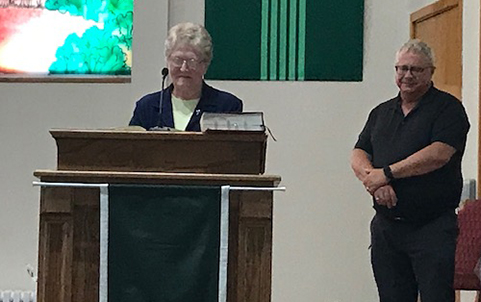
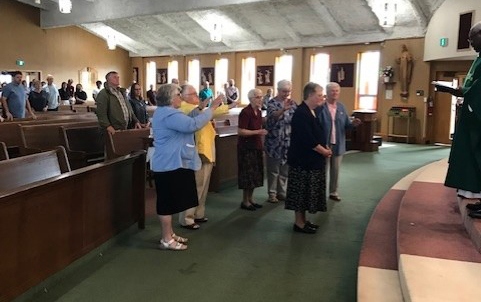
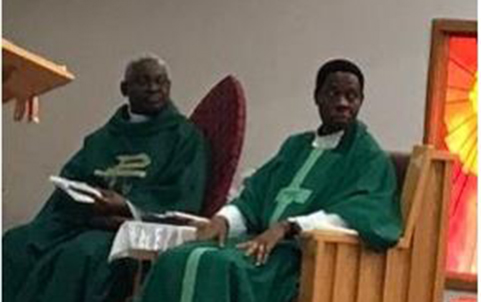
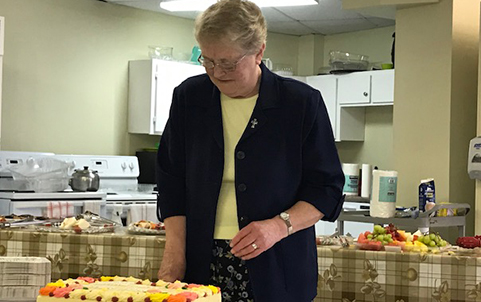
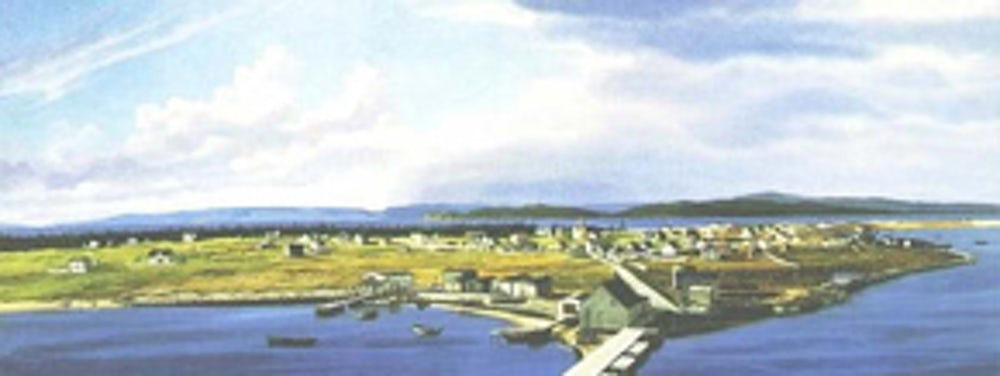
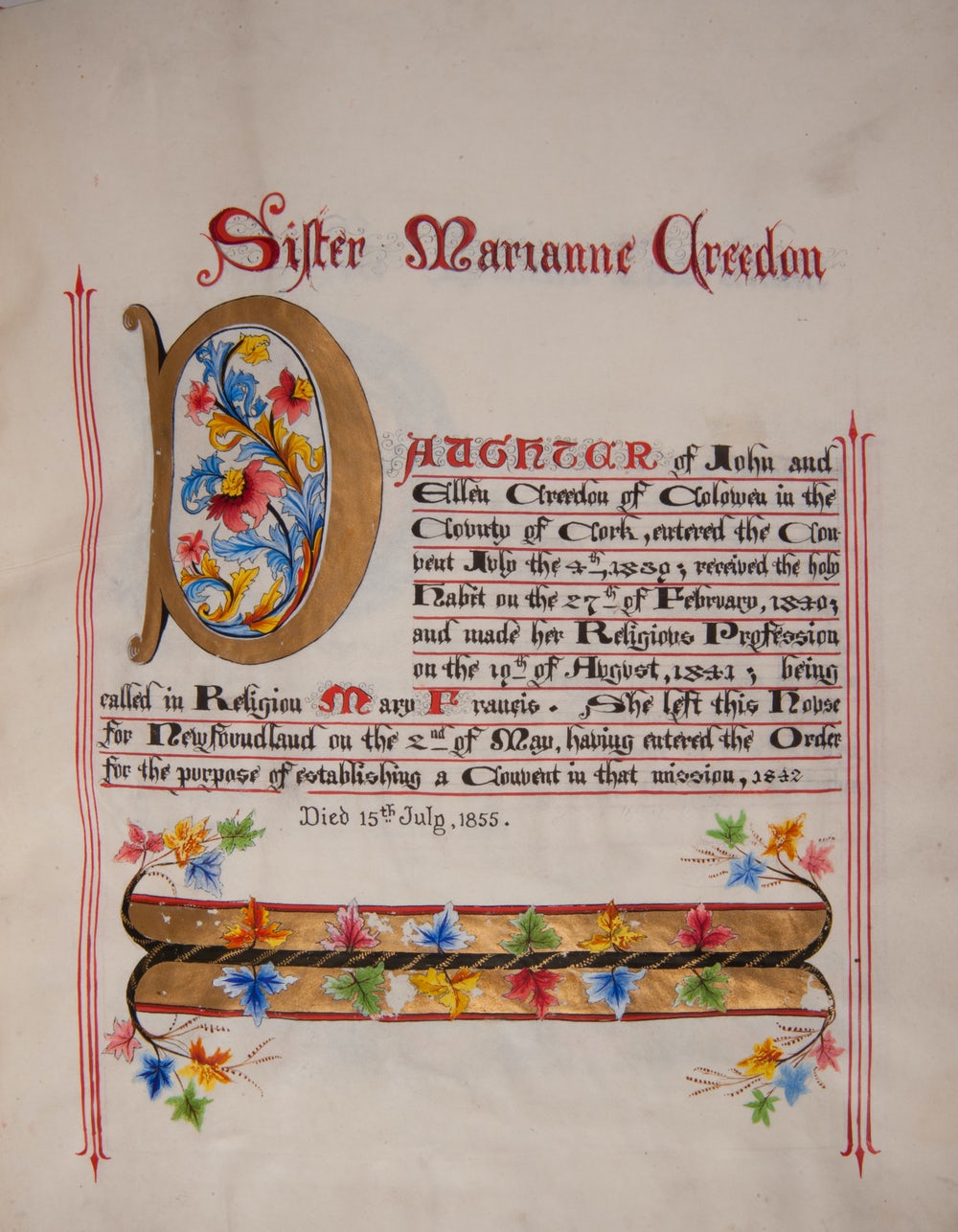 She and her few companions ministered in the school she had opened in 1843 and cared for the sick in their homes and at St. John’s Hospital, even during the most virulent epidemics that occurred so frequently in St. John’s in those days. Just a year before her death she opened Immaculate Conception Orphanage at Mercy Convent to care for children orphaned by these epidemics.
She and her few companions ministered in the school she had opened in 1843 and cared for the sick in their homes and at St. John’s Hospital, even during the most virulent epidemics that occurred so frequently in St. John’s in those days. Just a year before her death she opened Immaculate Conception Orphanage at Mercy Convent to care for children orphaned by these epidemics.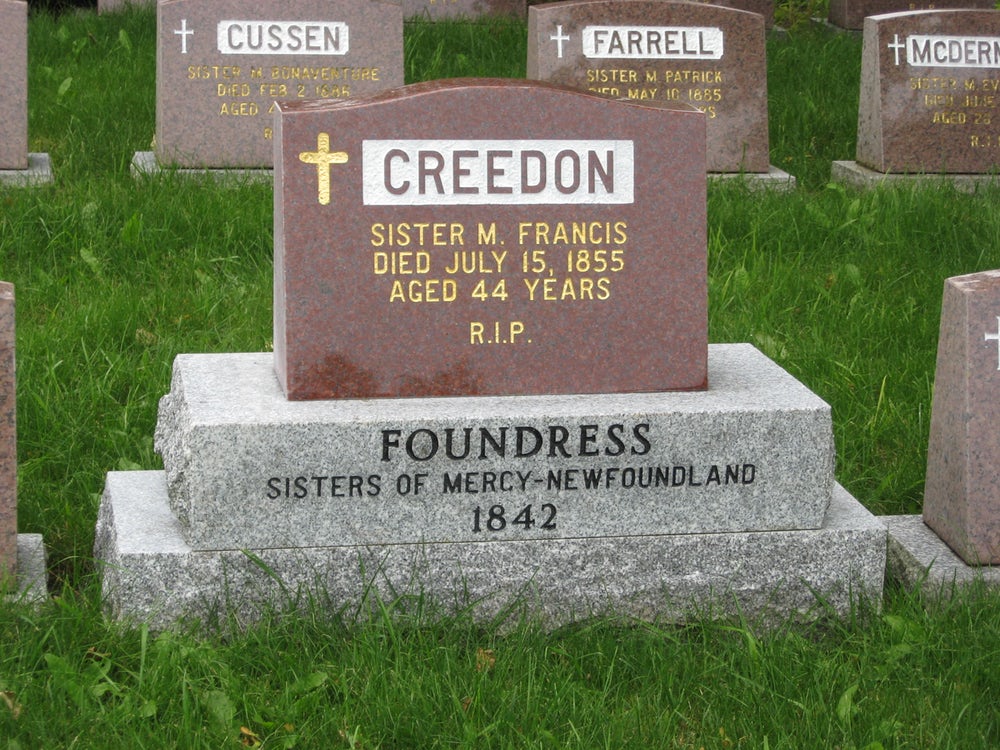 Ella y sus pocas compañeras ejercieron su ministerio en la escuela que había abierto en 1843 y atendieron a los enfermos en sus casas y en el Hospital de San Juan, incluso durante las epidemias más virulentas que se daban con tanta frecuencia en San Juan en aquellos días. Justo un año antes de su muerte abrió el Orfanato de la Inmaculada Concepción en el Convento de la Misericordia para atender a los niños huérfanos a causa de estas epidemias.
Ella y sus pocas compañeras ejercieron su ministerio en la escuela que había abierto en 1843 y atendieron a los enfermos en sus casas y en el Hospital de San Juan, incluso durante las epidemias más virulentas que se daban con tanta frecuencia en San Juan en aquellos días. Justo un año antes de su muerte abrió el Orfanato de la Inmaculada Concepción en el Convento de la Misericordia para atender a los niños huérfanos a causa de estas epidemias.
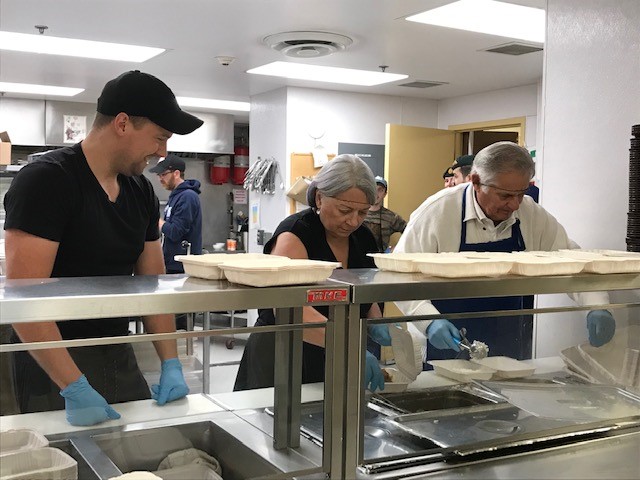
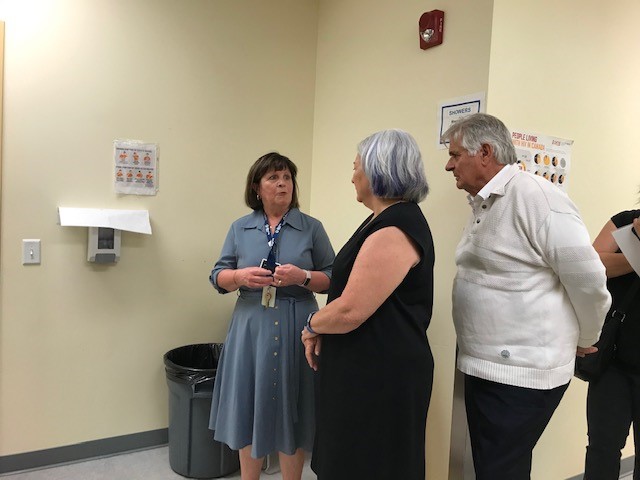

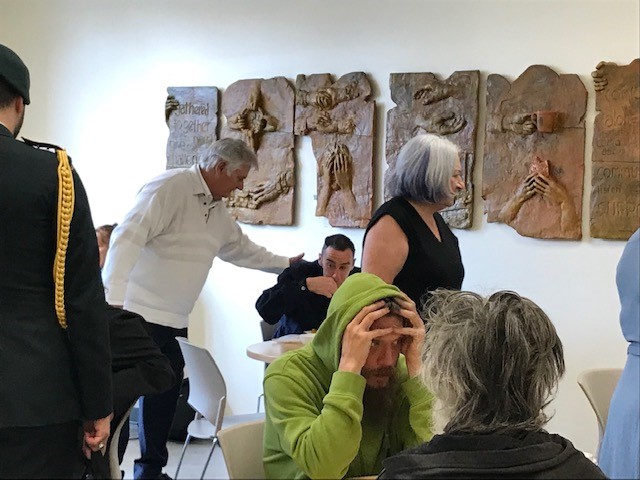
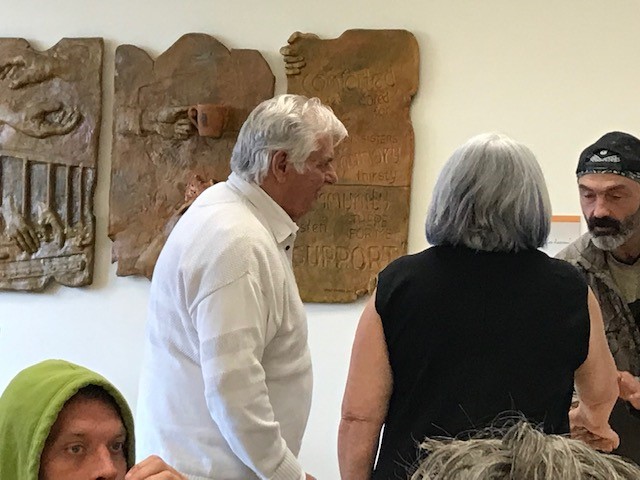
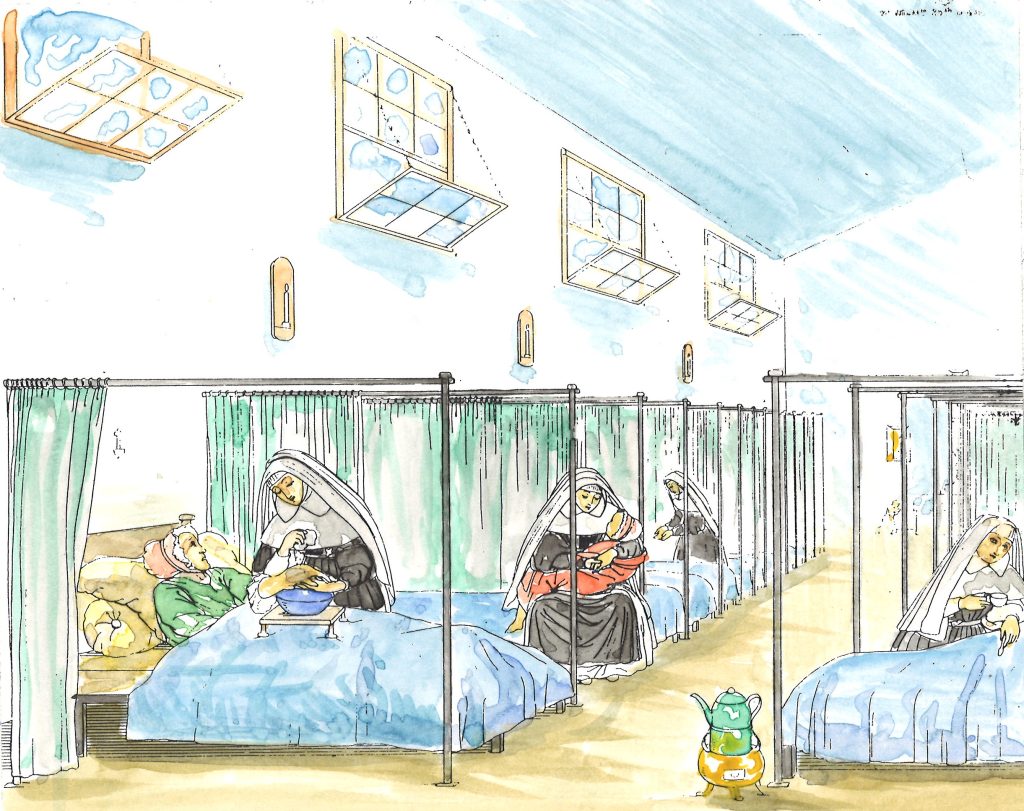 These two great women of Mercy faithfully carried out the works of Mercy as if there were dozens of sisters in the Newfoundland Mercy community – continuing in school and visiting the sick and poverty-stricken in their homes and in St. John’s Hospital (located near present-day Victoria Park). In June of 1947 when St. John’s was in the throes of a severe typhus epidemic, they closed school and devoted themselves entirely to visiting and caring for the sick. It was at St. John’s Hospital that Sister M. Joseph caught the dreaded fever from a young seaman who was suffering great physical and spiritual anguish. Despite the medical services of physicians and the loving care of Sister M. Francis, Sister M. Joseph died after two weeks of suffering the torments of the disease. She was 48 years of age and had only been a Sister of Mercy for four years.
These two great women of Mercy faithfully carried out the works of Mercy as if there were dozens of sisters in the Newfoundland Mercy community – continuing in school and visiting the sick and poverty-stricken in their homes and in St. John’s Hospital (located near present-day Victoria Park). In June of 1947 when St. John’s was in the throes of a severe typhus epidemic, they closed school and devoted themselves entirely to visiting and caring for the sick. It was at St. John’s Hospital that Sister M. Joseph caught the dreaded fever from a young seaman who was suffering great physical and spiritual anguish. Despite the medical services of physicians and the loving care of Sister M. Francis, Sister M. Joseph died after two weeks of suffering the torments of the disease. She was 48 years of age and had only been a Sister of Mercy for four years.